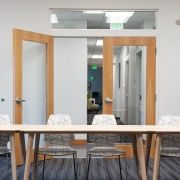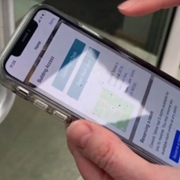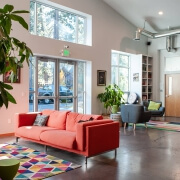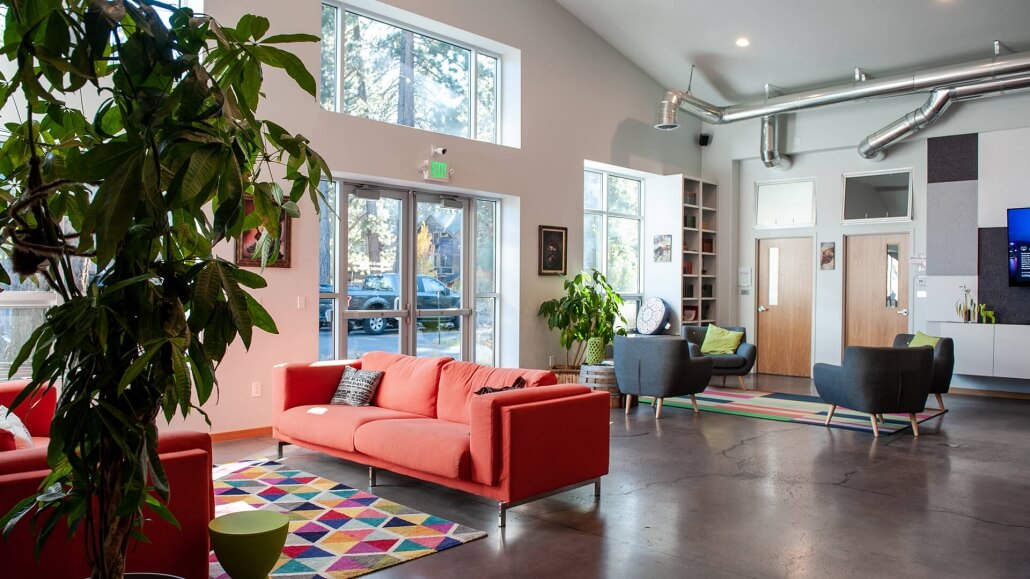How to Offer Coffee at Your Coworking Space
Coffee is a workplace staple.
There is something about that first sip of hot cup of coffee in the morning – the warmth, the rich aroma, the bitter flavor, the caffeine that helps wake us up. Drinking coffee is a ritual that goes beyond part of a morning routine, which helps explain why it is such a huge industry.
There is some solid science behind our obsession, actually.
First, how does it work?
The simple explanation is that the caffeine molecules trick your brain. Caffeine blocks sleepy adenosine by binding to its receptors and allowing happy dopamine to work better.
Why do we like it?
Mainly conditioning. We are conditioned to expect the positive buzz from caffeine when we detect the bitterness in the coffee, even though we are otherwise wired to avoid bitter tastes. This is a good thing as it can help us avoid ingesting icky things like poisonous foods.
Drinking coffee has also become a social behavior. We get together over a hot cup of coffee with friends, clients, or by ourselves next to a fire in the wintertime. The ritual of taking a break for something like coffee is a healthy one that can help boost productivity and social connection, caffeine or not.
Coffee & Coworking Spaces
In a coworking space, having coffee available for members is a table stakes amenity ranked as highly as a good internet connection.
Just as important as having it at all is HOW you provide it.
We at Jellyswitch believe deeply that the future of work is about flexibility more than anything else. Flexibility should always be put first in any decision making process.
And – if coworking spaces can demonstrate how well they are able to provide flexibility to their members, in as many ways as possible, it can be a huge competitive advantage.
Why is it so important for us to have such a range of options? One of the best ways to start off the day with your favorite type of coffee or tea, without having to leave the office to get it.
You don’t have to start off with a ton of different options. At Cowork Tahoe, I started with just one and expanded from there. By listening to your members and observing their coffee or tea preferences and habits, you can start to add in the options that best suit your community.
What options should you consider?
First, make sure you are providing really high quality coffee beans – this is also a great way to support your members’ favorite local roasters.
The classics:
The classic pot of coffee – drip
A classic 12-14 cup pot of coffee, just like you might have at home. Because it is so familiar, many members are drawn to it. A pot of coffee can be shared by multiple people, creating opportunity for interaction. It can be made ahead of time and set to brew first thing in the morning. When members walk into the lobby in the morning, they are greeted with music and the smell of freshly brewed pot. It sets the stage for a productive work day.
As a manager, you can make sure there is always hot coffee ready when someone walks into the kitchen. Because it is still a small pot, it doesn’t feel like you at a corporate event or a hotel – it is not a giant catering carafe, its more like the pot at the neighborhood diner. Many of our members enjoy preparing the next pot, it provides them the opportunity to contribute and share. This is one tiny piece of building a strong community, one pot of coffee at a time.
The single cup pot
Options that allow for a single cup to be brewed on demand are great for the person who doesn’t want to waste extra if they aren’t sure more members will be coming out for drip. Or, for the member that really appreciates a super fresh cup and isn’t sure how long that pot of coffee has been sitting there. While it doesn’t lend itself to creating interactions between members in the same way that a full pot can, its effective at getting what you need, when you need it.
One recommendation – as attractive as the Keurig types of single serve coffee makers can be, don’t do it. The pods are wasteful. You can still have quick & easy options without resorting to pods.
More time intensive coffee preparation:
French Press
The french press is definitely for the more particular coffee drinker. On demand, but enough to be shared if the press has a larger carafe, there is something satisfying in the process of using a french press – slowing pushing down the plunger and watching the water filter through the layer of grounds, leaving a thin creme on top.
Pour Over
These take time, and often that time is a welcome break. A pour over coffee feels almost like art. Using a beautiful stainless steel goose neck kettle with water heated to just the right temperature, you can control the flow of water through your grounds and make a perfect and strong cup of fresh coffee – taking anywhere from 2-5 minutes in the process. For the member that likes a moment of solitude from their busy schedule, this is for them.
Aeropress
For the french press enthusiast with less time, the aeropress is a futuristic option for making a single cup of incredibly strong coffee.
Automatic Espresso machines
There are a number of really good simple and easy to use automatic espresso machines on the market. The one that we have at Cowork Tahoe allows you to make a shot of espresso or Americano with the touch of a button. There is an attached frother to take it one step further and make yourself a quick latte.
Espresso machines
Unless you can have a full time barista on staff, or are a hybrid coffee and coworking space, its best to avoid having a huge espresso machine in your space. As gorgeous as they are, and as good as a really well made shot of espresso can be, these are a costly and complicated option.
Non-coffee options:
Tea
Although I am a passionate coffee drinker, sometimes there is nothing more that I want than a nice cup of tea. Many days I will start with coffee in the morning, but then only drink non-caffeinated herbal tea in the afternoon. Or if you are recovering from a cold, a nice cup of lemon ginger tea with some honey really hits the spot and help you keep working away.
Offer a selection of both caffeinated and caffeine free options, black, green, and herbal teas. For a nice touch, have individual honey sticks right there for those that like things a little sweeter.
Iced Tea
If summers are hot, having a pitcher of iced tea in the refrigerator is a welcome sight.
Hot chocolate & Cider
Whether a kid or kid at heart, having instant cider or hot chocolate options (with marshmellows!) warms the heart. When we have a big snowstorm come through, I like to take a few laps on the mountain and then come back to the office for a nice cup of hot chocolate while I settle in to check my emails.
Trendy options:
Cold Brew
Nitro Cold brew – the most exciting addition we made to Cowork Tahoe in the past year was offering nitro cold brew coffee on tap. We purchased a dual keg (the other tap will occasionally have home brewed beer or beer from one of our awesome local breweries, but as a special treat or for events). During the summer months, our space was going through kegs of cold brew faster than the local restaurants. We contracted with one of our favorite local roasters to keep us filled up, and it’s been a huge hit.
A word of advice – provide small glasses for the cold brew. It packs a punch and no one should be pouring themselves a pint of it at a time. You can purchase really cute tasting glasses and leave them on a tray next to the keg to encourage moderate serving sizes. Otherwise, I’m not sure any of our members would ever sleep!
Kombucha
This fermented tea, with a slight fizz and a taste that balances somewhere between sweet & sour, much like apple cider, has hit the trendy workplace by storm. It can be offered by the bottle, but can also be served on tap next to your cold brew.
The alternative to on-site coffee:
The coffee shop next door
Even if you have every coffee preparation option on this list, there is hopefully an amazing coffee shop (or several!) within walking distance of your space. Sometimes, there is nothing better than taking a break, a walk, getting a change of scenery and ordering a custom coffee from the local coffee shop. Maybe a member has a craving for a lavender vanilla latte or a really well done macchiato with a custom foam picture of a bear created by the barista. If you can encourage members to become patrons of the nearby shops and restaurants, that’s good for everyone’s business.

Finally, the cups. Have fun with your coffee cups! While a minimalist design and uniform cups is appealing, we have found that people have strong preferences for what type of mug they like their coffee in. Keep a variety available, both in size and design. Periodically get your members “gifts” by adding in some new cups. See how much more fun the coffee experience can be.

The coffee cup drawer at Cowork Tahoe
In summary, every way that you can signal to your members that you not only listen, but also are working to make your space as amazing as possible for them, the better their experience will be. Coffee is an easy way to do this, and a great way to help your members start the work day off on the right foot.













